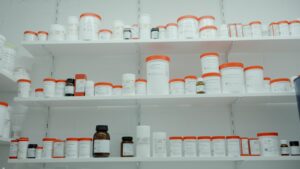Evaluating Cancer Drug Pricing and Efficacy: Insights from 2008-2022

Alt: Assorted-shape medication pill lot
Meta Description: Explore the relationship between US cancer drug launch prices and clinical efficacy from 2008-2022, uncovering trends critical for pharmaceutical success.
Introduction
The pharmaceutical industry continuously grapples with the challenge of balancing drug pricing with clinical efficacy. From 2008 to 2022, US cancer drug launch prices have seen a significant rise, doubling from approximately $100,000 to $200,000 per year/course of treatment. This escalation has sparked debates about whether these prices are justified by the clinical benefits they offer. Understanding drug launch success metrics is essential for pharmaceutical companies aiming to navigate this complex landscape effectively.
Trends in Cancer Drug Pricing
Over the past 15 years, the United States has experienced a substantial increase in cancer drug prices. This trend is not isolated to oncology but is more pronounced in cancer treatments compared to other medical conditions. The annual launch price inflation-adjusted by the Consumer Price Index has climbed by about 6% each year. This surge contributes significantly to higher health insurance premiums and out-of-pocket costs for patients, raising concerns about medical affordability and access.
Clinical Efficacy and Its Measurement
Clinical efficacy is a critical component in assessing the value of cancer drugs. The study analyzed five different efficacy metrics to provide a comprehensive evaluation:
- Overall Survival (OS): Measures the extension of life provided by the drug.
- Progression-Free Survival (PFS): Indicates the period during which the disease does not worsen.
- Overall Response Rate (ORR): Assesses the proportion of patients who experience tumor size reduction.
- ESMO-MCBS: A scale by the European Society for Medical Oncology that grades the clinical benefit of cancer drugs.
- Quality-Adjusted Life-Year (QALY) Gains: Combines longevity with quality of life improvements.
These metrics offer a multi-faceted view of a drug’s performance, ensuring that pricing aligns with tangible patient outcomes.
The Disconnect Between Pricing and Efficacy
Interestingly, the analysis revealed no consistent and statistically significant relationship between higher launch prices and improved clinical efficacy. In some cases, drugs with lower efficacy metrics had higher prices, challenging the notion that drug prices are value-based. The findings suggest that price increases may not be driven by enhanced patient outcomes but by other market dynamics, such as regulatory approvals and orphan disease status.
Key Insights:
- No Strong Correlation: Higher-priced drugs do not consistently offer superior clinical benefits.
- Accelerated Approvals: Drugs approved through accelerated pathways tend to have higher launch prices, regardless of their efficacy.
- Orphan Disease Status: A significant portion of high-priced drugs target rare conditions, where pricing dynamics differ from more common treatments.
Implications for the Pharmaceutical Industry
The lack of value-based pricing in cancer drugs implies potential inefficiencies in the market’s economic incentives. Without clear financial rewards tied to clinical efficacy, pharmaceutical companies might underinvest in developing more effective treatments. This scenario could lead to an imbalance where drug prices continue to rise without corresponding improvements in patient outcomes.
Challenges:
- Regulatory Environment: Navigating complex approval pathways without ensuring price justification through efficacy.
- Market Dynamics: Intense competition and market exclusivity can drive prices independently of clinical benefits.
- Research and Development Investments: Misaligned incentives may result in suboptimal allocation of R&D resources.
How ConformanceX Optimizes Drug Launch Success
In this context, platforms like ConformanceX play a pivotal role in redefining drug launch strategies. By leveraging data-driven insights and advanced AI technology, ConformanceX addresses the critical challenges faced by pharmaceutical companies:
- Predictive Analytics: Forecasting market needs and optimizing launch timelines to enhance success rates.
- Competitive Intelligence: Providing real-time market insights to position drugs effectively against competitors.
- Comprehensive Management Tools: Streamlining the entire drug launch process, from coordination to budget management.
Benefits of Using ConformanceX:
- Enhanced Decision-Making: Data-driven approaches lead to more informed strategies, aligning pricing with actual market and clinical outcomes.
- Operational Efficiency: Reduces time-to-market delays and budget overruns, ensuring a smoother launch process.
- Strategic Insights: Offers tailored analytics that consider current market trends, regulatory impacts, and patient needs.
Conclusion
The analysis of US cancer drug launch prices and their clinical efficacy from 2008 to 2022 underscores a significant disconnect between pricing and patient outcomes. This finding highlights the need for more effective drug launch success metrics that ensure value-based pricing. Platforms like ConformanceX are essential in bridging this gap, providing the tools and insights necessary for pharmaceutical companies to launch more effective and economically justified treatments.
Discover how ConformanceX can transform your drug launch strategy and maximize success. Learn More




